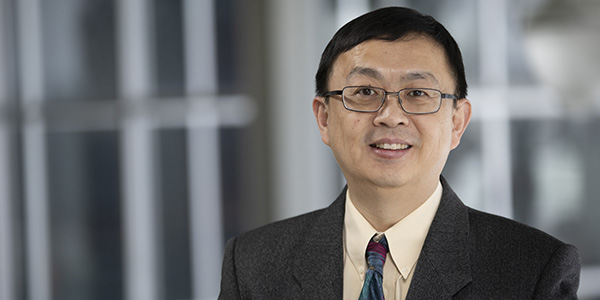Ning Zhou receives NSF CAREER Award
Assistant professor of electrical and computer engineering to provide a vision for power systems

Ning Zhou thinks big. In fact, he thinks about what “is arguably the most complex system ever built by human beings.”
Power systems.
The assistant professor of electrical and computer engineering has been awarded a National Science Foundation (NSF) CAREER Award to provide a vision for power systems as fossil fuels wane and renewable energy sources take center stage.
Zhou, who acknowledged that competition for funding is getting more difficult, said the CAREER Award is an honor, and also a recognition of his past work. “It has given me positive feedback in pointing out past contributions that have been recognized by my peers,” he said. “The NSF is not only evaluating what I said I will do, but has looked at what I’ve done in the past. It’s not just because this is a great direction to pursue, but there’s reasonable evidence to show that I’ve a chance to get this done!”
“We are going to continue to look into the future,” he said. “Our power system has been working for us for a long time, but has changed due to accelerating penetration of the renewable generation that we see. Coal is not sustainable and won’t last forever, so we’re now seeing wind and solar and don’t have to worry about them ending. Plus, there’s little pollution from them so we gain sustainability.”
What we do have to worry about with renewable energy sources, however, is uncertainty and variation, said Zhou.
“Along with these renewable energy sources come some challenges,” he said. “We can’t get wind power without wind, or solar polar at night, and that brings uncertainty and intermittent generation. We know roughly what they will bring, but we don’t know with 100 percent confidence, for example, if the wind will blow in the next hour. That’s uncertainty.”
Zhou and his team of graduate students – three PhD students and a number of master’s students at any given time – will work on both the theoretical and applied aspects of the future of power generation, transmission and distribution with the NSF funding.
“It’s a mutual training of sorts,” he said. “The master’s students give you motivation in a more application-oriented direction, and the PhD students and I work on the theory.”
Zhou said his goal is to provide a vision for power systems. Yes, you can get power from plugging a cord into an electrical outlet, but how does it get there?
First, you have to generate it by converting some resource (natural gas, coal, hydro, nuclear or renewable energy like solar and wind) from its primary source into electricity, he said. “But you don’t want a generator in your backyard, so you have to build transmission lines to run from far away and then be distributed to the power outlet.”
When the power passes through the transmission lines – which he likened to a highway – the voltage has to be stepped down, just as when a car has to slow its speed. “We need to step it down to a lower voltage for distribution, then use it to serve the load in the system when you to plug something into an outlet.”
Ultimately, Zhou’s goal is to create situational awareness concerning the integration of these renewable energy resources. “If there are variation and uncertainty, we need to be aware of that and let the operator know,” he said. “If there’s a 70 percent chance of uncertainty, we need to be able to quantify that and present it clearly to the operators so that the operators can allocate resources to take care of it, by using reserves such as stored energy.”
“If there are uncertainties and some variations, how can we quantify that and present it to those who need to know, so they can adjust?” he said.
“What I’m doing is different from the traditional, static state estimator model that takes a picture of what is happening now,” he said. “That’s static, taking one shot at a time. My goal is to put them together to form a movie – an integrated, dynamic state estimator – so we can predict what will happen in the future so operators can be prepared.”
